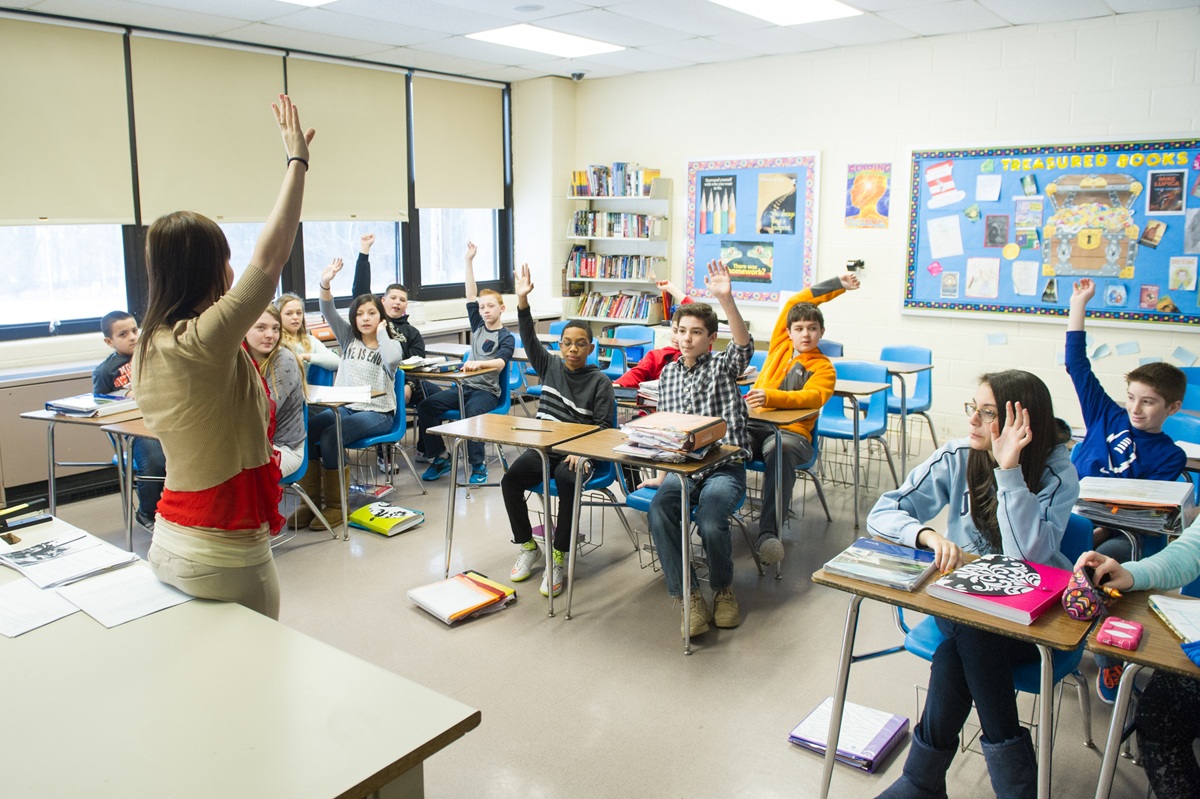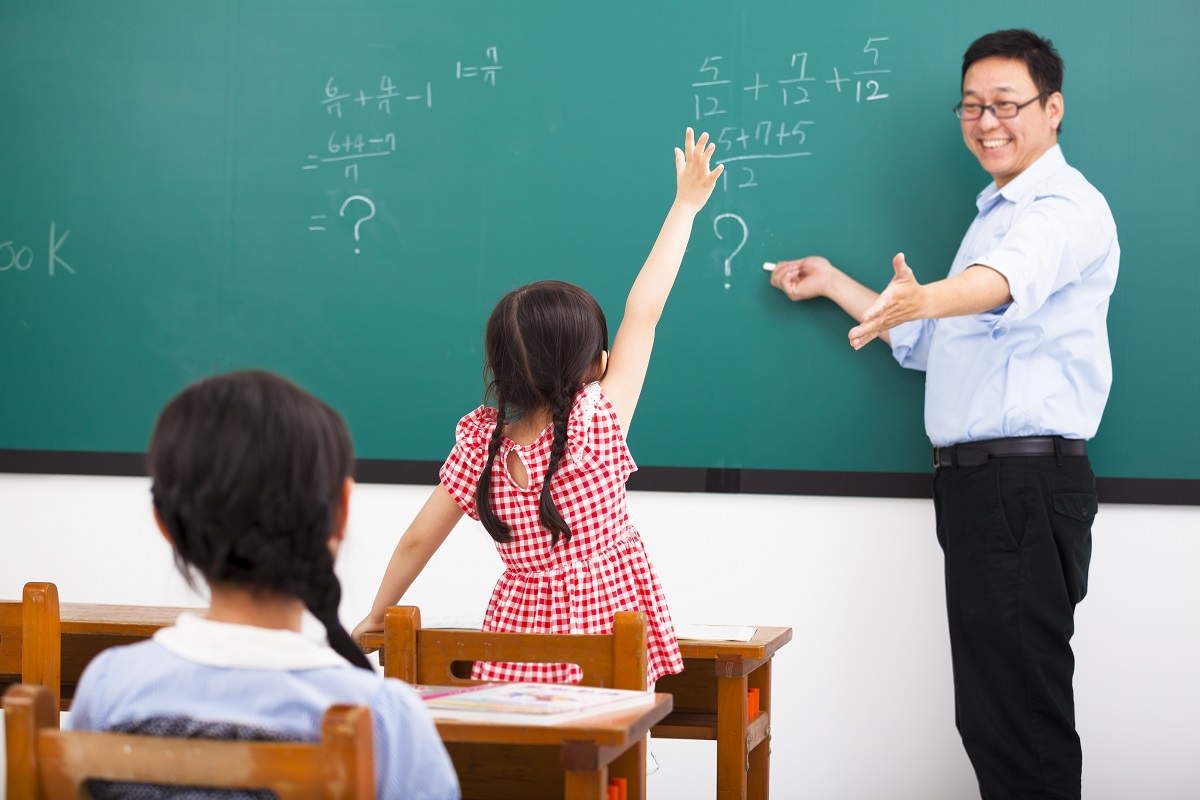Enroll in Primary Science Tuition Singapore for a Strong Science Foundation
Enroll in Primary Science Tuition Singapore for a Strong Science Foundation
Blog Article
A Comprehensive Guide to the Various Knowing Approaches in Main Scientific Research Instruction
The expedition of diverse knowing techniques in key science guideline presents a possibility for teachers to boost trainee engagement and understanding significantly. By taking a look at hands-on discovering strategies, inquiry-based techniques, and joint techniques, we can identify reliable methods that cater to various discovering designs.

Hands-On Knowing Methods
Hands-on learning techniques play a critical function in key science guideline, engaging pupils in active expedition and experimentation. These approaches enable students to communicate directly with sensations and products, promoting a deeper understanding of scientific concepts. By utilizing manipulatives, designs, and real-life experiments, instructors develop a setting where pupils can observe, hypothesize, and examine their ideas.
Such methods not only enhance comprehension however likewise cultivate critical reasoning and problem-solving skills. When students take part in activities like constructing simple machines, growing seeds, or performing chain reactions, they are motivated to ask concerns and seek responses through their own monitorings. This experiential technique aids to debunk intricate scientific concepts, making them much more relatable and available.
Additionally, hands-on learning advertises cooperation amongst peers, as students frequently function in teams to perform experiments or share searchings for. This team effort not just enriches their learning experience however also creates essential social skills. Ultimately, integrating hands-on techniques in primary scientific research instruction cultivates a long-lasting love of learning and inquisitiveness regarding the environment, laying a strong structure for future academic pursuits in scientific research and past.
Inquiry-Based Knowing
Inquiry-based understanding is an instructional technique that urges students to ask questions, check out sensations, and build their very own understanding of scientific ideas. This method changes the emphasis from typical teacher-led direction to a more student-centered experience, where students take the campaign in their academic trip. By promoting interest, inquiry-based knowing advertises deeper interaction with the material, enabling students to explore topics in a meaningful context.
In method, this technique often involves hands-on experiments, observations, and critical thinking activities that align carefully with the clinical method. Students are encouraged to formulate theories, design investigations, and analyze data, which cultivates important abilities such as logical and problem-solving thinking. The duty of the educator in this framework is to help with expedition, leading students with the inquiry procedure while motivating independent thought and cooperation.
In addition, inquiry-based understanding nurtures a sense of possession over the discovering process, encouraging students to go after expertise actively. This method not only boosts understanding of scientific concepts but likewise fosters a lifelong love for knowing, gearing up trainees with the skills essential to browse a progressively complex world.
Collaborative Learning Approaches
Joint knowing approaches equip students to participate in meaningful communications with peers, cultivating a shared responsibility for their instructional end results. In key science guideline, these approaches motivate students to collaborate to check out clinical principles, address issues, and perform experiments (primary science tuition Singapore). By joining team tasks, pupils can leverage varied perspectives, enabling richer understanding and retention of scientific understanding
One trick aspect of joint knowing is the emphasis on communication skills. Students have to articulate their thoughts, pay attention actively to others, and bargain concepts, every one of which are crucial expertises in both real-world and academic contexts. This social interaction not just enhances their understanding of scientific principles but additionally promotes team effort and conflict resolution abilities.
Additionally, collective knowing frequently results in raised motivation and interaction. They are a lot more likely to take possession of their knowing journey when students see the value of their contributions within a group. Educators can facilitate this procedure by making organized team tasks that straighten with educational program goals while offering assistance on efficient cooperation techniques. Generally, incorporating joint knowing techniques in main scientific research instruction grows a vibrant discovering environment that prepares students for future scholastic and social difficulties.
Technology Assimilation in Science
The combination of modern technology in main science guideline enhances finding out experiences by supplying cutting-edge tools and resources that support numerous teaching methods, including collective learning - primary science tuition Singapore. Making use of digital platforms, simulations, and interactive applications enables students to involve deeply with clinical ideas, assisting in a much more hands-on approach to knowing
Digital labs, for circumstances, allow learners to carry out experiments securely and efficiently, advertising inquiry-based understanding. These tools can imitate real-world scientific situations, allowing students to envision complicated procedures that would helpful site certainly be difficult to replicate in a traditional classroom setting. Technology cultivates communication and partnership among pupils, as they can share searchings for and work together on projects via on the internet systems.
Additionally, multimedia presentations and academic videos can enrich lessons by catering to diverse discovering designs, making abstract principles extra obtainable. Data evaluation tools additionally equip pupils to accumulate and translate clinical data, enhancing important assuming skills. Overall, the tactical unification of modern technology in main science instruction not just improves interaction yet likewise prepares trainees for a technologically advanced society, furnishing them with vital abilities for future scientific endeavors.
Set Apart Direction Methods
Differentiated guideline approaches are vital for addressing the diverse demands of learners in primary scientific research education and learning. These methods enable teachers to tailor their mentor techniques to accommodate differing abilities, passions, and discovering designs within the classroom. By employing differentiated guideline, teachers can create an inclusive environment that cultivates involvement and enhances understanding of clinical ideas.
One reliable method is to make use of flexible grouping, which enables students to work together with peers at similar skill levels or with varying perspectives. This method encourages peer understanding and advertises important reasoning. Furthermore, providing options in tasks can empower students, allowing them to pick jobs that resonate with their interests while still satisfying curricular objectives.
In addition, including tiered assignments is an additional useful strategy. Deliberately jobs with varying levels of intricacy, instructors can make certain that all pupils are suitably tested, regardless of their effectiveness. Making use of formative assessments to determine comprehending more enables educators to change their educational approaches dynamically, making sure that each see this page student receives the support they require.
Eventually, implementing set apart direction methods in main scientific research education and learning not only boosts pupil learning end results but likewise cultivates a passion for scientific research, preparing pupils for future academic searches.

Verdict
In summary, reliable key science guideline necessitates a diverse method that includes hands-on understanding, inquiry-based approaches, and joint methods. The assimilation of technology Learn More and separated guideline even more satisfies varied discovering styles, cultivating a setting conducive to exploration and important reasoning. By carrying out these techniques, instructors can boost trainee interaction and comprehension, ultimately supporting a lifelong enthusiasm for science and questions. Such comprehensive approaches are vital for creating informed and curious future researchers.
The expedition of diverse discovering techniques in key science guideline provides a possibility for teachers to enhance pupil interaction and understanding significantly.Hands-on discovering methods play a critical function in main science direction, involving pupils in active expedition and testing.Inquiry-based knowing is an educational method that encourages students to ask inquiries, investigate phenomena, and build their very own understanding of scientific concepts.Collective discovering techniques encourage students to engage in significant communications with peers, cultivating a shared obligation for their academic end results. In general, including collaborative understanding techniques in main scientific research guideline cultivates a dynamic understanding setting that prepares students for future academic and social difficulties.
Report this page